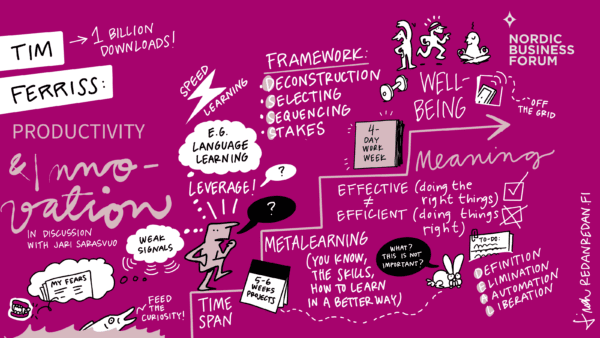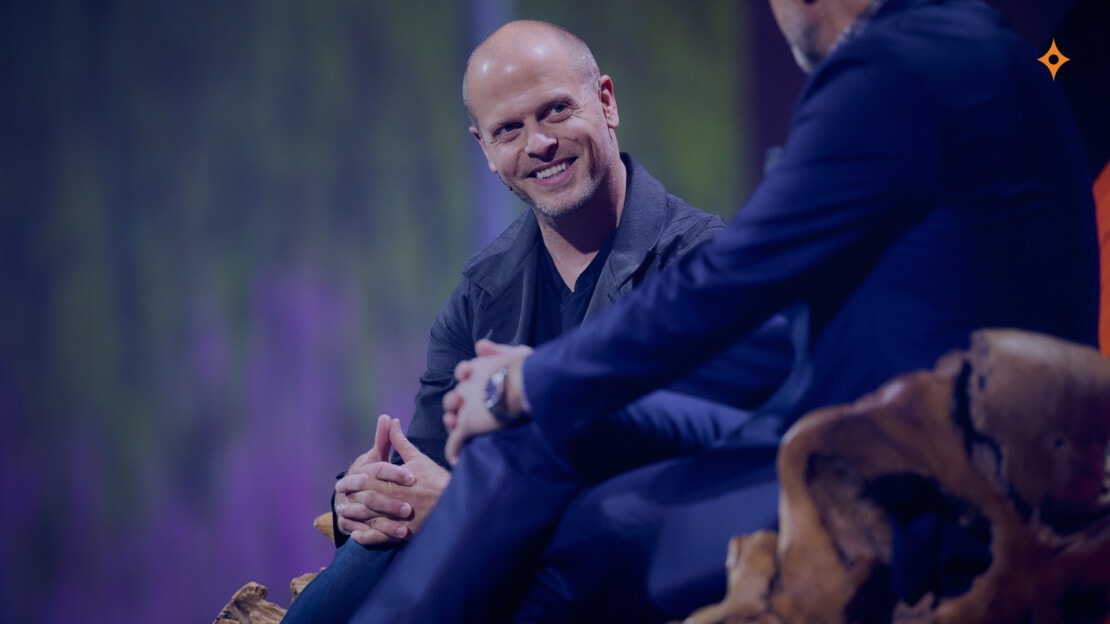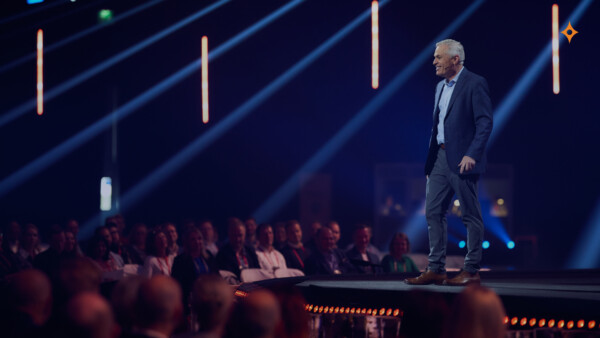17Oct2023
If the story of humankind is a story of leverage, then there are few people alive today whose body of work offers more tools for achieving optimal results than Tim Ferriss. “This has been a focus of mine for a very long time, going all the way back to language learning and continuing when I turned my attention to business and personal performance.”
For Tim, his lifelong, systematic laziness is an ongoing effort to generate the greatest outputs from the fewest inputs. At the core of this philosophy are two things: effective systems of work and different ways to leverage effort for maximum impact. They are two sides of the same coin, and both must be considered if either is to be effective.
The Language of Thought
However, the substrate on which effectiveness runs is not processes or leverage points: it is thought. For Tim, his first foray into systematic laziness came when traveling outside the US for the first time and visiting Japan as an exchange student. He soon came to realise that if he wanted to have any chance of understanding another culture, he had to speak the language.
“Language gives you another lens through which to view the world, to interpret reality, to learn about the stories that humans create for organizing meaning.” Therefore, if language is crystallized thought, then your language proficiency directly correlates to your ability to articulate your understanding of the world.
In the process of optimizing his approach to learning Japanese, Tim came to another realization: just like riding a bike, language learning is an acquired skill. What he needed was a meta-skill – the skill of learning how to learn. Central to this was the ability to ask better questions from high-performing experts – what are the most common mistakes novices make in the first year or two? Where do people waste most time? As he played with the wording of these questions, he achieved greater leverage in the learning process.
A Framework for Curiosity
This innate curiosity has been a part of Tim from a young age, when his mother allowed him to follow his interests and fed his curiosity through positive reinforcement. “I think that broadly speaking, we know very little, and that’s exciting to me. I don’t think we’ve even scratched the surface in most fields.” When he feels compelled to pursue his curiosity today, Tim is an advocate of DSSS, a learning framework he applies to most of his endeavors:
Deconstruction: Citing the example of learning Japanese, Tim simplified the seemingly overwhelmingly complex task by identifying and learning the 1,945 most commonly used characters. These represented the 20% of effort that yielded 80% of his effective outcome.
Selection: Doubling down on the 80/20 Pareto principle, he advised the audience to look back at historical data and ruthlessly focus on criteria that tend to return the greatest outcomes.
Sequencing: Put simply, taking the pieces of any task and arranging them in the most logical, effective sequence. Many people fail in learning new languages because they tend to start with brutal tables of grammatical conjugation, the antithesis of fun.
Stakes: Stakes create incentives. More information is not likely to solve the problem for a person who has repeatedly failed at achieving an objective like, say, losing weight. However, if you both agree to publicly donate €1000 to a political campaign you hate if the goal is not met, it’s much more likely that the work will be put in.
The True Meaning of Productivity
While all this sounds like a great recipe for productivity, Tim once again shared a note of caution and asked the audience to carefully define what we mean by productivity. For Tim, productivity means both being effective and being efficient, and those are two very different things. “Being effective is by far the more important of the two – you can be inefficient at doing the right things and still get great results. You can also become very good at doing trivial things.”
Tim shared that he starts every day by asking which 1-3 things he could accomplish to make it a day well spent. This is also the first step of the DEAL productivity framework first shared in his international bestseller, The 4-Hour Workweek:
Definition: The first step is very similar to that of DSSS. This is the moment to be very clear with your objectives.
Elimination: Identifying what you can remove from your to-do list that doesn’t contribute to your objectives. It is very important to eliminate before automating.
Automation: Putting elegant processes in place where actions become habits and you avoid decision fatigue. Adding more people to an inefficient process actually makes them worse.
Liberation: Once you’ve created more time, the scarcest resource, don’t fall into the trap of filling the void with more work. Instead, focus more on meaningful things.
Creating Informational Advantage
Outside of these powerful frameworks, Tim also offered a range of tips and tools he has used to leverage optimal outputs in his work:
Planned transfer: Tim focuses on projects that will develop his skills and relationships, even if the project itself fails. He considers his life a series of 6-month experiments, which in turn helps him identify the initiatives with the most synergies with his other efforts. Even in cases of failure, these benefits transfer forward to his other activities in a compounding way.
Maximized serendipity: Tim realized early on that moving to innovation epicenters like San Francisco would increase his chances of meeting the right people and discovering the right opportunities. He also discovered that the things the “nerds” were doing had a habit of becoming mainstream within a few years.
Listing fears alongside goals: By defining our fears, by making them specific and measurable, we defang them. More often than not, these fears are acting like a needlessly applied emergency brake that slows us down. Tim undertakes fear setting at least once a quarter to this day, a practice he believes still has the power to change the trajectory of his life.
Listening to failure’s lessons: Tim says the two times he suffered from burnout weren’t necessarily bad things. His startup burnout led to him writing the 4-Hour Workweek, and the compressed publication schedule of the 4-Hour Chef saw him leave the field for a while so he could test out a podcast. Today, the Tim Ferriss Show has surpassed a billion downloads.
Understanding when to move on: April marks the 10-year anniversary of his podcast. From angel investing to books and podcasts, each chapter of Tim’s life has lasted around 7-10 years. At the beginning of each, he often lands in a very uncrowded area with a lot of leverage. But then the blue ocean turns red, and things get more difficult.
Health, Wealth, and Wisdom
Tim finished by reflecting on the cornerstones of his Tools for Titans book – health, wealth, and wisdom. In terms of wealth, he noted that angel investing had become more challenging after his prosperous period from 2008 to 2012. While he continues angel investing, he recognized that it “didn’t significantly enhance his overall well-being.”
For health, Tim emphasized the importance of strength training as the cornerstone of all health. He also stressed the value of mobility exercises and physical sports for both physical and mental well-being. Additionally, he advocated for mindfulness practices like journaling, morning meditation, or exercise as a form of mental self-care.
When it came to wisdom, Tim focused on observing individuals “whose actions align with their words,” valuing authenticity in a world where it’s rare. He also advised the audience to remain curious about the profound questions and to explore various wisdom traditions that tackle these subjects.
As he contemplated life and aging, Tim acknowledged that “not everything could be measured,” emphasizing that efficiency wasn’t his sole priority. He saw the value in deliberately slowing down and savoring the process as nourishment when it comes to activities like reading poetry.
And finally, in a world of overstimulation, he stressed the importance of intentional boredom as a catalyst for innovative thinking, as a tool for viewing things differently and making unique connections.

Visual summary of the discussion by Linda Saukko-Rauta
Want to get the full summary of the Nordic Business Forum 2023 speeches + extra content for reflecting on your learning? Download your free copy of the full Executive Summary and summaries from previous events!


